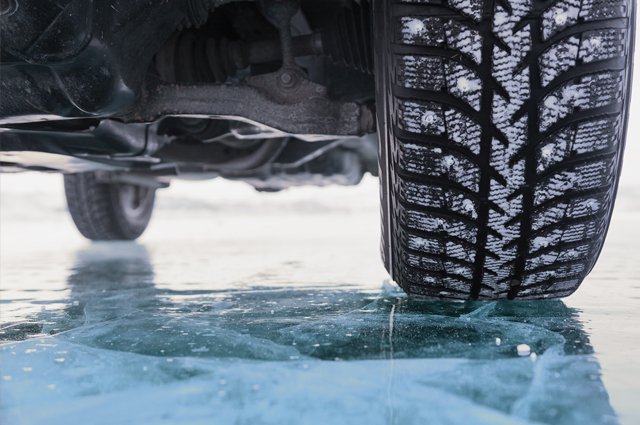DID YOU KNOW? Beating Black Ice Could Mean A Better Insurance Rate

Winter is officially here and the arctic air has arrived, making it dangerous to be outside, much less on the roads. Even though we like to think we’re accustomed to tough Midwestern winters, the fact is we all tend to forget to adapt our driving styles when the season arrives.
Black ice can be one of the worst causes of auto accidents because it forms quickly and is very hard to see. It isn’t actually black, but it appears that way because if forms without bubbles, allowing it to blend in with any surface it forms over. It forms most commonly at night or in the early morning when temperatures are at their lowest, and it tends to form on parts of the road that do not get much sunshine, or on elevated roadways.
But if it happens quickly, and it’s hard to see, what are some of the signs to look for?
-
If you are driving and suddenly see cars swerve for no apparent reason, black ice is a likely cause.
-
If you are driving and your steering starts to feel very “light”, you may be driving on black ice. Even when you are driving in a straight line, you are constantly making small steering corrections and you should be able to feel your car respond. If you make a steering correction and there is no corresponding response from the tires, you are probably driving on black ice.
-
Black ice almost always forms in very smooth, very glossy sheets. In the right lighting conditions, you will be able to distinguish this shiny patch of pavement from the normally flat and dull-black pavement.
What can you do if you find yourself sliding on black ice?
-
First, get yourself familiar with that feeling before you’re on a crowded highway. Practice driving on ice in a safe surrounding. Find a large, empty parking lot that is covered in ice or snow and drive faster than you normally might. Hit the brakes hard to get familiar with the pulsing feeling of your anti-lock braking system. Over-correct with the steering wheel to induce a slide and steer your way out of it.
-
If you do hit black ice, you need to remain calm and avoid over-correcting. If you’ve practiced this, you know how quickly your car will slide and spin if you make sudden movements with the steering or brakes. The general rule is to do as little as possible and allow the car to pass over the ice. Roll your foot off the gas, keep the steering wheel straight and don’t touch the brakes. Also, hold the steering wheel loosely. If you have a death grip on the steering wheel, you won’t allow for any wheel travel if you are driving on bumps or uneven pavement.
-
If you can, gently head for areas of traction. This may include textured ice, snow covered areas, or the rumble strips on the shoulder.
OK, I’m skidding. Now what?
-
Black ice is often patchy, so hopefully your tires will soon find traction. Keep in mind that once your tires find traction, your car will want to start heading in the direction of that traction. This is another reason why you want to loosely hold the steering wheel, because it will jerk back when you hit dry pavement.
-
Now’s the time to hit the brakes. Most cars have ABS, so you will start to hear and feel that pulsing/vibrating sound. Keep your foot on the brake and let the car find whatever deceleration is possible.
-
Always steer your car in the direction you want it to go. You may get the car out of a skid, but it could snap back and skid in the opposite direction. If this happens, you are probably going to wind up in a spin. At this point, try to steer the car into something that will cause a minimum amount of damage, like a snowbank or a field. You may not have any choice in the matter, but you can at least try.
-
Once you stop, stay calm and assess the situation. Are you hurt? Are your passengers ok? Is the car driveable, and if so, can you slowly move it to a safe spot where it won’t get hit by other cars?
Have questions about auto insurance after a black ice accident? David Miller has answers. Miller, who writes the monthly, DID YOU KNOW? blog is The Plexus Groupe’s Vice President, Client Executive for Private Client Solutions. Miller can be reached by calling 846-307-6141.

.jpg?width=352&name=download+(2).jpg)

